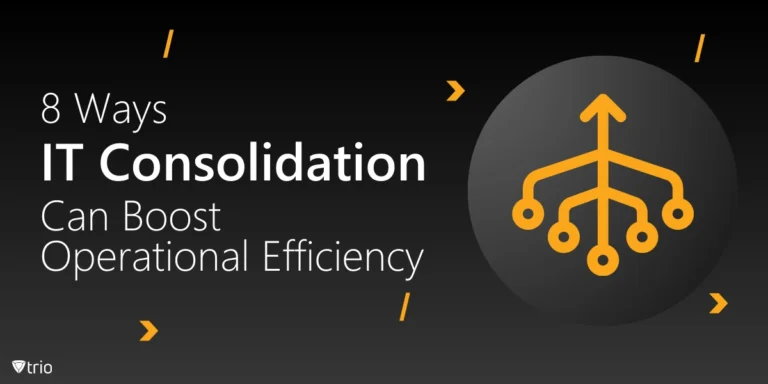In today’s business environment, ensuring that services meet client expectations is critical to maintaining strong relationships and avoiding disputes. A well-structured Service Level Agreement (SLA) serves as a formal contract between a service provider and a client, clearly outlining the expectations, responsibilities, and performance standards that must be met. In this blog, we will explore the importance of an SLA, the key components it should include, and how you can create an effective SLA template for your organization.
The Importance of a Service Level Agreement (SLA)
An SLA is more than just a formal agreement; it is a cornerstone of a successful service relationship. It provides clarity and transparency, setting clear expectations for both the service provider and the client. This transparency helps prevent misunderstandings and conflicts, ensuring that both parties are on the same page regarding the scope of services, performance metrics, and responsibilities. SLAs are crucial in some industries. For example, SaaS service level agreements are a cornerstone of client satisfaction.
Furthermore, an SLA acts as a protective measure for both parties. For the client, it guarantees a certain level of service and outlines the consequences if those standards are not met. For the service provider, it helps manage client expectations by clearly defining what is and isn’t included in the service. This mutual understanding is crucial for maintaining a positive working relationship and delivering consistent value.
Why Service Level Agreements are Crucial for IT Admins
Service Level Agreements (SLAs) are crucial for IT admins because they establish clear expectations, define responsibilities, and ensure accountability in the delivery of IT services. Here’s why SLAs are particularly important for IT admins:
Clear Definition of Services
SLAs provide a detailed description of the services that IT teams are expected to deliver, including the scope, quality, and availability of these services. For IT admins, this clarity helps in managing resources, prioritizing tasks, and ensuring that the team focuses on delivering what is agreed upon with the client or internal stakeholders.
Performance Measurement
SLAs include specific performance metrics, such as uptime guarantees, response times, and resolution times. These metrics give IT admins quantifiable targets to meet, making it easier to track and measure the performance of the IT services they manage. This not only helps in maintaining high service standards but also in identifying areas for improvement.
Accountability
By clearly outlining the responsibilities of both the IT team and the client or user, SLAs create a framework for accountability. If service levels fall short, IT admins can refer to the SLA to understand where the breakdown occurred and take corrective action. This accountability helps in maintaining trust and transparency between the IT department and the users they support.
What to Include in a Service Level Agreement?
Not all service level agreements are created equally and there are certainly some best practices one can use. Here are what every service level agreement should include, regardless of the organization and the industry:
-
Service Scope
Defining the scope of services is the first step in creating an SLA. The scope should detail what services are included, the limitations of those services, and any exclusions. This section ensures that both parties have a clear understanding of what the service provider will deliver, reducing the risk of scope creep or unmet expectations.
-
Performance Metrics
Performance metrics are the heart of an SLA. These metrics define how the quality of service will be measured and what standards must be met. Common service level agreement metrics include uptime guarantees, response times, and resolution times. By specifying these metrics, the SLA provides a quantifiable way to assess the service provider’s performance and hold them accountable.
-
Responsibilities
An effective SLA clearly outlines the responsibilities of both the service provider and the client. The service provider’s responsibilities typically include delivering the agreed-upon services, monitoring performance, and reporting on service levels. The client’s responsibilities might include providing access to necessary resources, reporting issues promptly, and adhering to payment terms. This section ensures that both parties understand their roles and obligations.
-
Penalties for Non-Compliance
To ensure accountability, an SLA should include penalties for non-compliance. These penalties often take the form of service credits, which are discounts applied to future invoices if the service provider fails to meet the agreed-upon standards. By including penalties, the SLA incentivizes the service provider to maintain high service levels and provides the client with recourse if those levels are not met.
-
Terms and Conditions
The terms and conditions section of an SLA covers important legal and procedural details, such as confidentiality, termination clauses, amendment procedures, and dispute resolution processes. They can also include terms for SLA monitoring. This section protects both parties and ensures that the SLA is legally binding and enforceable.
How to Implement an SLA in Your Organization
Once your SLA template is finalized, it’s important to implement it effectively within your organization. Here are some steps to ensure successful implementation:
- Customization: Tailor the template to meet the specific needs of each client or service engagement. Ensure that the SLA reflects the unique requirements and expectations of the service.
- Communication: Clearly communicate the SLA to all relevant stakeholders, including service teams, clients, and management. Make sure everyone understands the terms and their respective responsibilities.
- Monitoring: Regularly monitor service performance against the metrics defined in the SLA. Use automated tools and reporting systems to track performance and identify any areas where improvements are needed.
- Review and Update: Periodically review the SLA to ensure it remains relevant and effective. Update the SLA as needed to reflect changes in services, client expectations, or business objectives.
Download Our Free Service Level Agreement Template
A well-crafted Service Level Agreement is essential for any organization that provides services to clients. It ensures that both parties have clear expectations, defines how performance will be measured, and sets out the consequences for non-compliance. By using the SLA template provided, you can create a robust agreement that supports a positive, long-term service relationship. Use our ready-made service level agreement template to get a head start.
See Trio in Action: Get Your Free Trial Now!
To further enhance your service management practices, consider exploring Trio’s comprehensive suite of tools that streamline SLA creation, monitoring, and management. Sign up for a free trial today and see how Trio, our cutting-edge, Mobile Device Management solution can help you deliver exceptional service while maintaining compliance with your SLAs.




